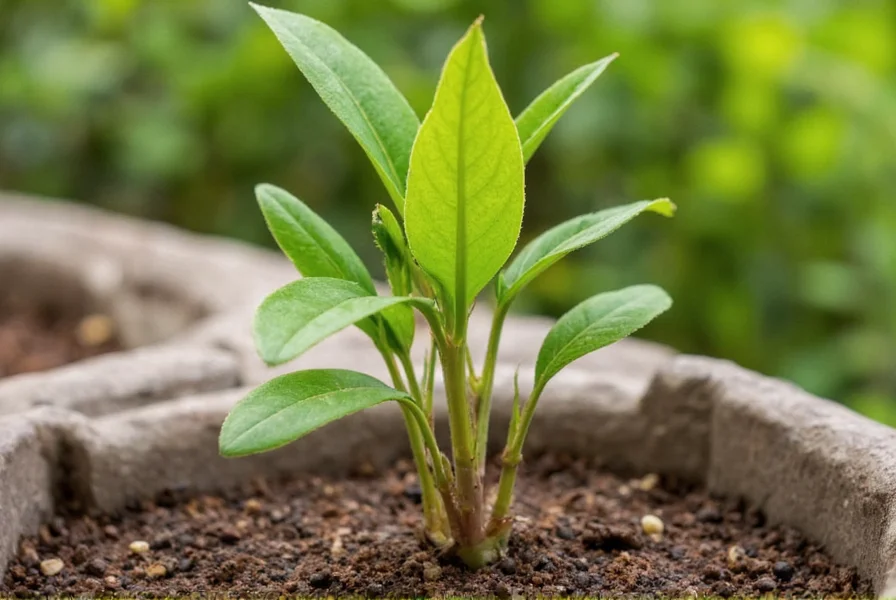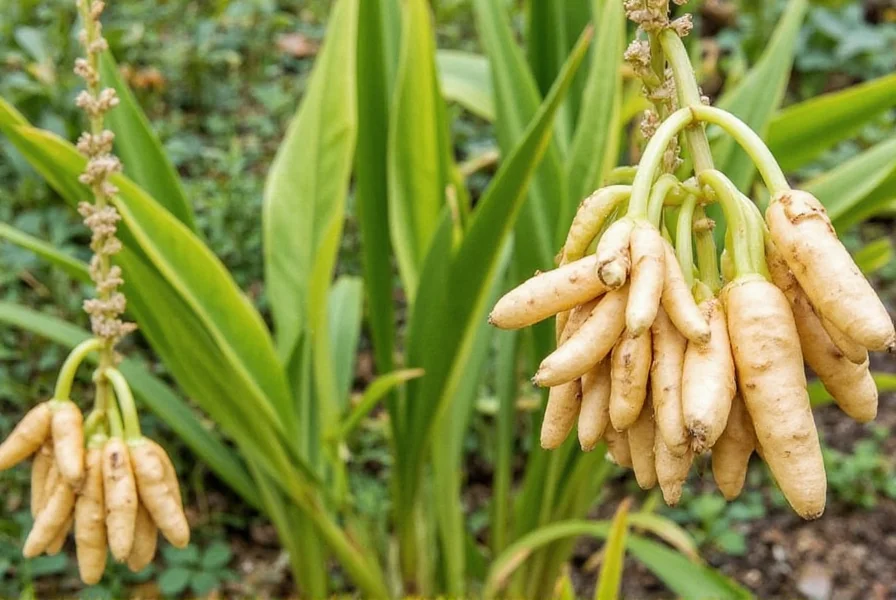Planting ginger at home is simpler than many gardeners expect. This tropical perennial thrives in warm climates but can be successfully grown in containers almost anywhere. Whether you're cultivating ginger for culinary use, medicinal purposes, or simply as an attractive ornamental plant, understanding the proper planting technique ensures healthy growth and abundant harvests.
Selecting Quality Ginger Rhizomes
The foundation of successful ginger cultivation begins with selecting healthy rhizomes. Look for plump, firm pieces with multiple visible growth buds (often called "eyes"). These buds appear as small bumps or protrusions on the surface. Organic grocery store ginger often works well since it hasn't been treated with growth inhibitors. Avoid rhizomes that feel dry, shriveled, or show signs of mold.
Before planting, you can encourage sprouting by placing the rhizome in a warm, moist environment for 1-2 weeks. Some gardeners recommend soaking rhizomes in lukewarm water for a few hours to stimulate growth. Divide larger rhizomes into 1-2 inch sections, ensuring each piece has at least one healthy bud.
Optimal Planting Conditions for Ginger
Ginger thrives in specific environmental conditions that mimic its native tropical habitat. Understanding these requirements significantly increases your chances of successful cultivation.
| Planting Method | Soil Depth | Spacing | Best For |
|---|---|---|---|
| Ground Planting | 2-4 inches | 8-12 inches apart | Warm climates (zones 9-12) |
| Container Planting | 2-3 inches | One rhizome per 12" pot | Cooler climates, limited space |
| Indoor Starting | 1-2 inches | Multiple in tray | All climates, early season start |
Step-by-Step Ginger Planting Process
Soil preparation: Create a loose, well-draining soil mix with high organic matter content. A blend of 60% potting soil, 30% compost, and 10% perlite or sand works exceptionally well. Ginger prefers slightly acidic to neutral soil (pH 5.5-6.5). If planting in-ground, amend your garden soil with generous amounts of compost and ensure proper drainage.
Planting technique: Place ginger rhizomes horizontally in the prepared soil with growth buds facing upward. Cover with 2-4 inches of soil, depending on your climate (deeper in hotter regions). Water thoroughly after planting, but avoid creating soggy conditions. In containers, choose pots at least 12 inches deep with adequate drainage holes.
Location selection: Ginger prefers partial shade, especially in hotter climates. Morning sun with afternoon shade produces optimal results. In cooler regions, more sun exposure may be beneficial. When growing indoors, position near an east-facing window or provide filtered light.

Ginger Plant Care Requirements
Proper care after planting determines your harvest success. Ginger requires consistent moisture but cannot tolerate waterlogged soil. Water when the top inch of soil feels dry, typically 1-2 times weekly depending on conditions. During hot summer months, you may need to water daily.
Fertilize ginger plants every 4-6 weeks with a balanced, organic fertilizer. A 10-10-10 or similar formula works well, or use compost tea for a more natural approach. Avoid high-nitrogen fertilizers which promote leaf growth at the expense of rhizome development.
Mulching helps maintain consistent soil moisture and temperature. Apply 2-3 inches of organic mulch such as straw or shredded leaves around your plants, keeping it slightly away from the stems.
Harvesting Your Ginger Crop
You can harvest ginger at different stages depending on your needs. For young, tender "spring ginger," carefully dig around the edges of the plant after 4-5 months. For mature rhizomes with stronger flavor and better storage qualities, wait 8-10 months until the leaves begin to yellow and die back.
To harvest, gently loosen the soil around the plant and lift the entire rhizome cluster. Brush off excess soil (don't wash) and allow to dry in a shaded, well-ventilated area for 2-3 days before storing. Save some healthy rhizomes with visible buds for replanting your next crop.

Troubleshooting Common Ginger Growing Problems
Yellowing leaves: Often indicates overwatering or poor drainage. Reduce watering frequency and ensure soil isn't staying soggy. Check for root rot by gently examining roots.
No growth after planting: Ginger requires warm soil temperatures (at least 70°F/21°C) to sprout. If planted too early in cool conditions, growth may be delayed. Consider using a heat mat for container plants.
Pests: Ginger generally has few pest problems, but watch for aphids, spider mites, and mealybugs. Treat infestations with insecticidal soap or neem oil solutions.
Diseases: Rhizome rot is the most common issue, usually caused by overwatering or poor drainage. Prevent by using well-draining soil and avoiding waterlogged conditions. Remove and destroy affected plants to prevent spread.
Frequently Asked Questions
Can I grow ginger from store-bought ginger?
Yes, you can grow ginger from grocery store rhizomes, though organic varieties work best as conventional ginger may be treated with growth inhibitors. Choose pieces with visible growth buds, soak in water for a few hours, and plant following standard ginger planting techniques. Be patient, as store-bought ginger may take longer to sprout than nursery-grown rhizomes.
How long does it take for ginger to grow from planting to harvest?
Ginger typically requires 8-10 months to reach full maturity for harvesting. However, you can harvest young ginger after 4-5 months if desired. The plant will show maturity signs when the leaves begin to yellow and die back. In cooler climates, the growing season may be shorter, potentially requiring container growing with indoor overwintering.
What's the best way to grow ginger in cold climates?
In cold climates, grow ginger in containers that can be moved indoors when temperatures drop below 50°F (10°C). Start plants indoors 2-3 months before your last frost date, then move containers outdoors when daytime temperatures consistently stay above 70°F (21°C). Bring containers back inside before fall frosts. Use well-draining potting mix and ensure containers have adequate drainage holes to prevent root rot during winter months.
How often should I water ginger plants?
Water ginger plants when the top inch of soil feels dry to the touch. During active growth in warm weather, this may mean watering 1-2 times per week. Container plants often require more frequent watering than in-ground plants. Reduce watering as the plant matures and leaves begin to yellow, signaling harvest time. Always ensure proper drainage to prevent rhizome rot, which is the most common cause of ginger plant failure.
Can ginger be grown indoors year-round?
Yes, ginger can be successfully grown indoors year-round with proper conditions. Choose a container at least 12 inches deep with drainage holes, use high-quality potting mix, and place in a location with bright, indirect light (east-facing window ideal). Maintain temperatures between 70-90°F (21-32°C) and humidity around 50-60%. Mist plants regularly or use a humidity tray. Indoor ginger typically grows slower than outdoor plants but can still produce harvestable rhizomes in 10-12 months.










 浙公网安备
33010002000092号
浙公网安备
33010002000092号 浙B2-20120091-4
浙B2-20120091-4